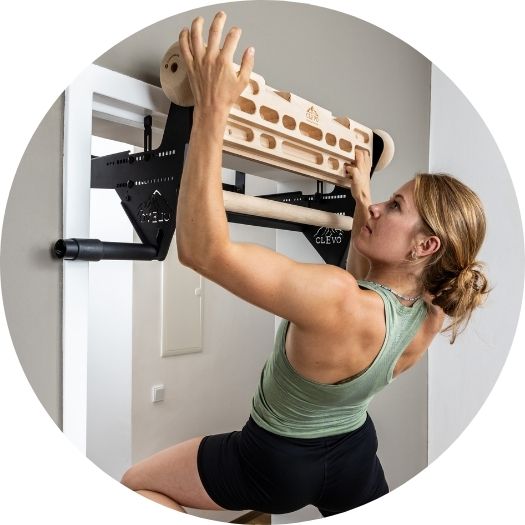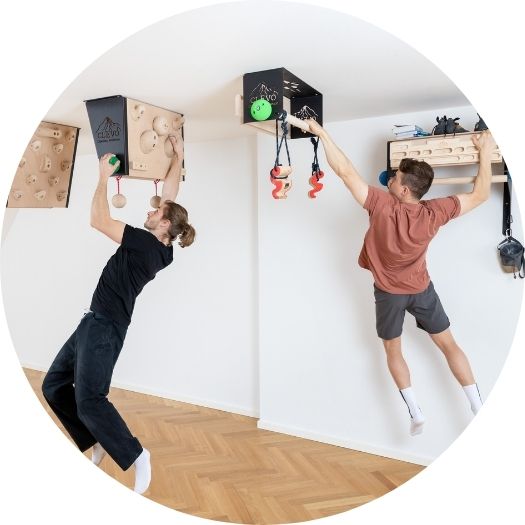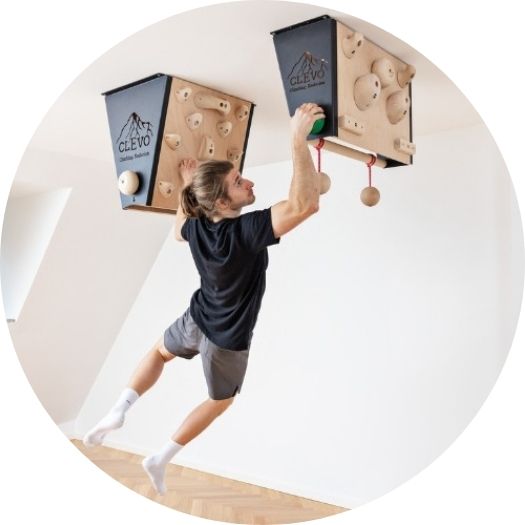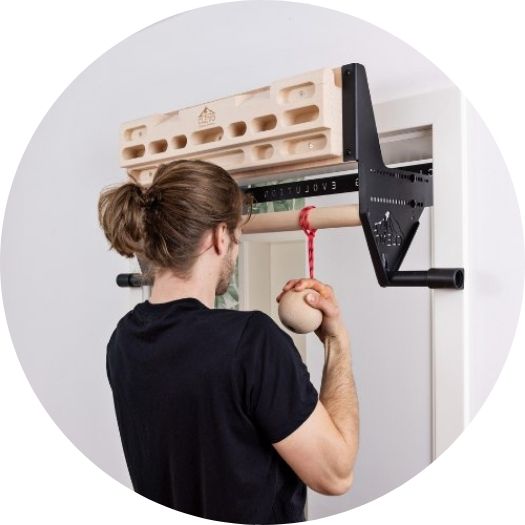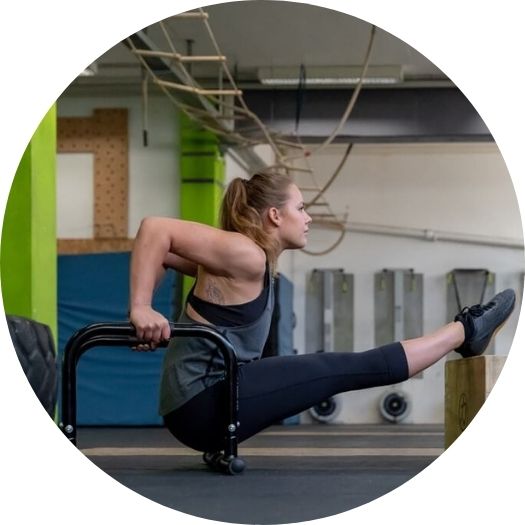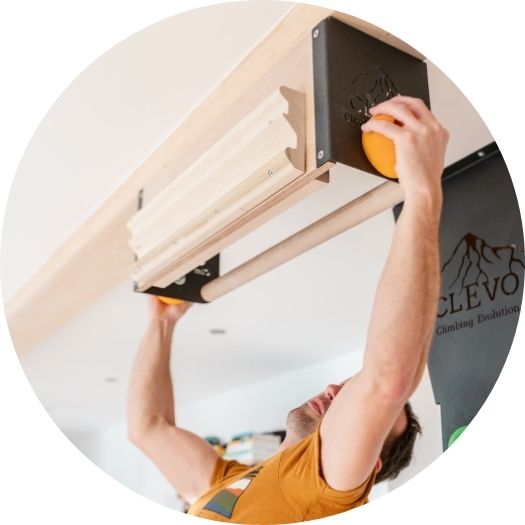What are typical injury patterns when climbing?
Climbing and bouldering are technically demanding - they require strength, technique and flexibility. But it is precisely this versatility that also carries a risk: typical injuries to fingers, tendons, shoulders and joints are among the most common problems among climbers.
The good news is that many injuries can be avoided with targeted prevention. In this article, you will find out which injury patterns are particularly common, how to warm up effectively, what you should look out for while climbing and how you can train specifically at home in order to climb safely and healthily in the long term.
These sports put our bodies under particular strain. This results in certain injury patterns that frequently occur in beginners and experienced climbers. The most common include
Finger and tendon injuries
Common problems are tendonitis or overloading of the flexor tendons (e.g. ring tendon injuries). They are often caused by over-intensive training or abrupt increases in load - especially with small grips or intensive pulls.
Shoulder and rotator cuff problems
The shoulder is put under a lot of strain when climbing, especially during overhead pulling movements or dynamic movements. Incorrect technique or a lack of stability can lead to irritation or overloading.
Overloading the wrists and finger joints
Joints can become irritated, especially with one-sided grip techniques or long sessions. Continuous, controlled training helps to minimize these risks.
Strained muscles and tendons
Strains can occur, especially during dynamic movements or inadequate warm-up. These often affect the shoulders, back or forearms.
Understanding these injury patterns is crucial in order to take preventative action. In the next section, we will show you how a proper warm-up program can significantly reduce the risk of injury.
How can you warm up effectively?
A targeted warm-up is the key to preventing injuries when climbing and bouldering. It increases blood flow to the muscles and tendons, increases joint mobility and prepares the central nervous system for the upcoming strain. A good warm-up program consists of several phases:
-
General warm-up
Start with 5-10 minutes of light endurance work, e.g. jumping rope or loose, dynamic mobilization exercises. The aim is to get your circulation going and increase your body temperature. -
Mobilization & stretching
Perform dynamic stretching exercises for the shoulders, wrists, fingers and hips. Small circles, shoulder rolls and finger stretches help to prepare the joints. -
Special climbing warm-up
Now comes the fine preparation: short, targeted exercises that activate the specific muscle groups for climbing. This is where the clevo tools can help you get the most out of your preparation. -
Fingerbloc Mini
The compact fingerboard is ideal for gently activating your fingers and tendons. Light slopes with minimal load are suitable for warming up - e.g. holding exercises of 5-10 seconds with pauses to gently prepare the finger strength.
-
Fingerboard Slim
The slim fingerboard from Clevo is ideal for varying your warm-up routine. Use larger handles and pockets for gentle pulling movements. This not only trains finger strength, but also helps to warm up the gripping muscles evenly.
-
Fingerboard Flex
With its flexible structure, the Fingerboard Flex is particularly suitable for adjusting the load individually. During the warm-up routine, you can use it to incorporate dynamic pull-ups or light pull-ups, which also activates the shoulders and core.
-
Short technique training
Finish the warm-up with simple climbing moves, easy bouldering problems or traversing exercises to practise your technique and movement coordination and prepare your body for the sport-specific strain.
💡 Tip: The aim of a warm-up is not to maximize the load, but to gently activate the muscles and tendons. This minimizes the risk of overloading and injury and lays the foundation for a successful climbing session.
What needs to be considered during training?
Now that we have clarified which injury patterns are particularly common and how you can prevent overloading by warming up properly, let's look at what you can do during bouldering to avoid falls and the like.
The most important thing is to learn how to fall correctly. Beginners should repeatedly make controlled training jumps onto the mat and work their way up bit by bit. This is especially true if you have made it a habit to avoid falling by climbing down. It may be easy on your joints to fall or jump off when bouldering, but it is unavoidable in the long run. So you should prepare yourself so that you can land safely.
If you come across an unsafe or unstable move while bouldering, it is often a better decision for safety reasons to plan for a possible fall from the outset and not to hold on to the target hold at all costs. It is equally important to consciously familiarize yourself with controlled falls. This is because it is often safer to let go in time and land on the mat than to hold on tightly and fall uncontrollably.

Another important point is to be able to assess your own performance and your body's signals. Especially at the beginning, it is difficult to know where your own physical limits lie, especially if you want to make progress. However, if your finger joints are already aching and you've hardly been able to complete a boulder safely for numerous attempts, it's no shame to take a break for the rest of the climbing session and move on to easier projects. Often enough, a break makes all the difference after a long project.
So learn to pay attention to your body and its signals and to specifically train and compensate for your weak points.
💡 Tip: Climbing should never be about pure strength - control, technique and conscious load management are the best strategies for staying injury-free in the long term.
How can you train preventively at home?
Not only can you reduce the risk of injury before or during a climbing session, you can also build up specific climbing strength at home with special training units. This will give you more pronounced muscles that will support you when bouldering and protect your tendons and ligaments.
The fingers and tendons in particular are subject to high loads when climbing and bouldering, as mentioned above. For most people, this is a very unusual strain. However, certain tools, such as a hangboard, can be used to skillfully train the individual fingers and their grip strength.

Clevo Hangboard Plus
We have created a small example workout for a first training session on the hangboard:
1st activation (2 rounds)
-
5-7 seconds light dead hang on large handles (e.g. handle or low bar)
-
20 seconds rest
-
3-4 repetitions
Aim: gentle activation of the finger and forearm muscles.
2nd technique hang (2-3 rounds)
-
7-10 seconds hang on medium-deep bars (approx. 20 mm), with open grip (no full crimp position).
-
50-60 seconds rest
-
3 repetitions
Aim: Gentle strength building, practise clean technique, minimize risk of injury.
3. antagonist compensation (2 rounds)
-
Rubber band exercise: push fingers outwards against resistance (10-12 repetitions).
-
Rest for 30 seconds
-
Supplementary: 8-10 push-ups or shoulder blade retraction (hang on pull-up bar, actively pull shoulder blades downwards).
Aim: balancing the flexor and extensor muscles, shoulder stability.
4. cool-down (5 minutes)
-
Gently shake out the hands
-
Mobilization of the wrists
-
Light stretching of the finger and forearm muscles
💡 Tip: Always work submaximally (approx. 60-70% of maximum load). Finger strength takes time - it is better to train regularly and gently than to increase too quickly.
In addition to the hangboard, there are numerous other training devices, some of which have already been presented above, to protect you from overloading and injury-related breaks with the help of well thought-out training.
Whether you are a beginner or an experienced climber - injury prevention is always worthwhile. The products from Clevo Climbing help you to train smartly and safely. So you can concentrate fully on what's most fun: climbing itself.

